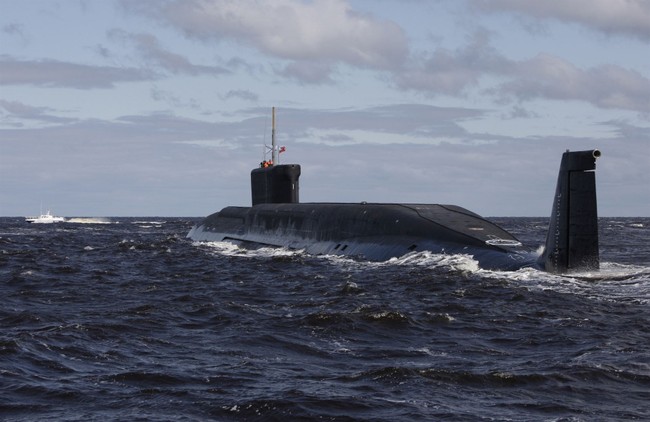
Quite some time ago now, when the Cold War was winding down, I went to my 10-year high school reunion and bumped into an old buddy I hadn’t heard from since we left school and went out into the world. He ended up going to the Navy Academy at Annapolis, and then went on to fly anti-submarine warfare (ASW) helicopters in the Navy. As I was still involved in the Army, we ended up sitting down, having a beer, and swapping some war stories for some sea stories. At one point, I asked him if he had ever tracked an actual Soviet sub, and what that was like.
He informed me that American subs, which he had exercised against, were “holes in the ocean,” almost impossible to track unless they turned on a transponder; some of them reportedly produced less acoustic signature than the random noises of the sea around them. But Russian subs, as he put it, “sound like a tin pail full of old bolts being shaken down under the water.”
It occurred to me, given the Russian fondness for maskirovka, that it would be a very Russian thing to have an old steel drum full of junk on a spindle in each of their subs, constantly rotating, and when/if a war started, to turn them all off at once and disappear. My Navy buddy didn’t like that idea.
Now we may be facing considerations like that again. The old Cold War game of nautical tag is picking up again; a small Russian Navy task group recently parked itself in Havana for a port visit following some exercises in the Atlantic, and now we see that the U.S. Navy has sent one of our nuclear fast-attack boats to show the flag in Guantanamo Bay:
U.S. Southern Command said the USS Helena, a nuclear-powered fast attack submarine, pulled into the waters near the U.S. base in Cuba on Thursday, just a day after a Russian frigate, a nuclear-powered submarine, an oil tanker and a rescue tug crossed into Havana Bay after drills in the Atlantic Ocean.
The stop is part of a “routine port visit” as the submarine travels through Southern Command’s region, it said in a social media post.
Other U.S. ships also have been tracking and monitoring the Russian drills, which Pentagon officials say do not represent a threat to the United States.
“This is not a surprise. We’ve seen them do these type of port calls before,” Pentagon spokeswoman Sabrina Singh said Wednesday when asked about the Russian drills. “We of course take it seriously, but these exercises don’t pose a threat to the United States.”
Indeed, these exercises don’t pose any direct threat – these kinds of deployments, after all, never pose a threat until they do. But there are some facts here that we Americans should be taking into account.
Previously on RedState: A Russian Submarine and Frigate Visit Havana – Now Let the Panic Begin
NEW: As Russian Navy Conducts Drills Off the US Coast, Sen. Cruz Goes Off on Biden’s Appeasement of Putin
First, the United States Navy in 2024 doesn’t strike quite the intimidating pose that it did in, say, 1980, when my buddy entered the Navy Academy. Second, our national leadership, as in the National Command Authority (NCA), presents an eloquent picture of weak leadership, indecisiveness, and willingness to spend trillions on other nations’ defense while ignoring readiness in our own.
It’s not something that sparks confidence among American veterans, especially us old Cold War types. Especially since now, we’re starting to see some of the same old games played, from “port visits” to Cuba, to Russian patrol bombers approaching the Alaska coast, not to mention combined Russian and Chinese fleets trailing their coats down that same coast.
Plus ça change, plus c’est la même chose.
The last Cold War ended peacefully, largely due to the partnership between Margaret Thatcher and Ronald Reagan, not to mention their will to see it done. Many Cold War veterans, myself included, are beginning to wonder about how the next one will end, and looking for the next Reagan on the horizon.
